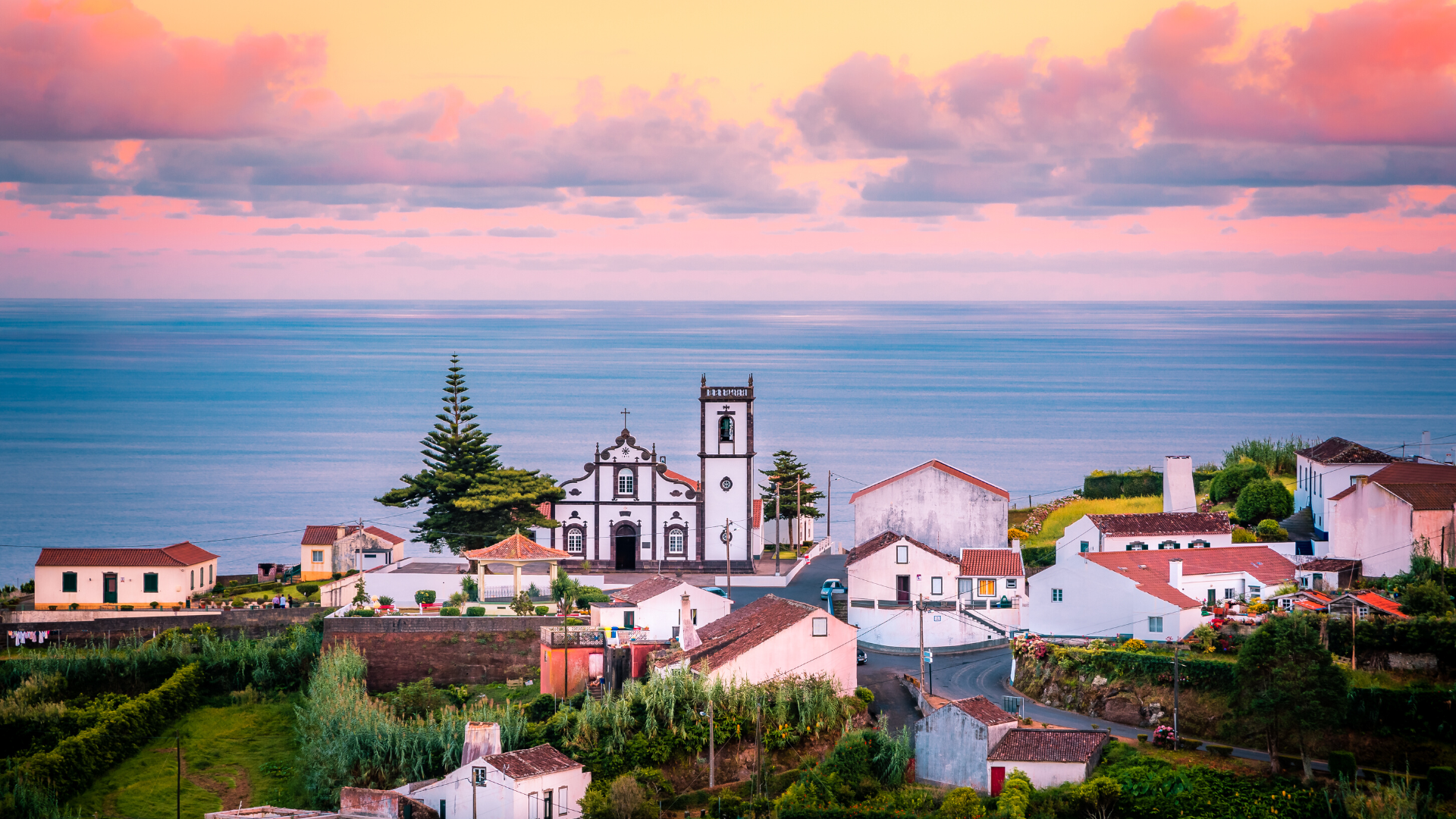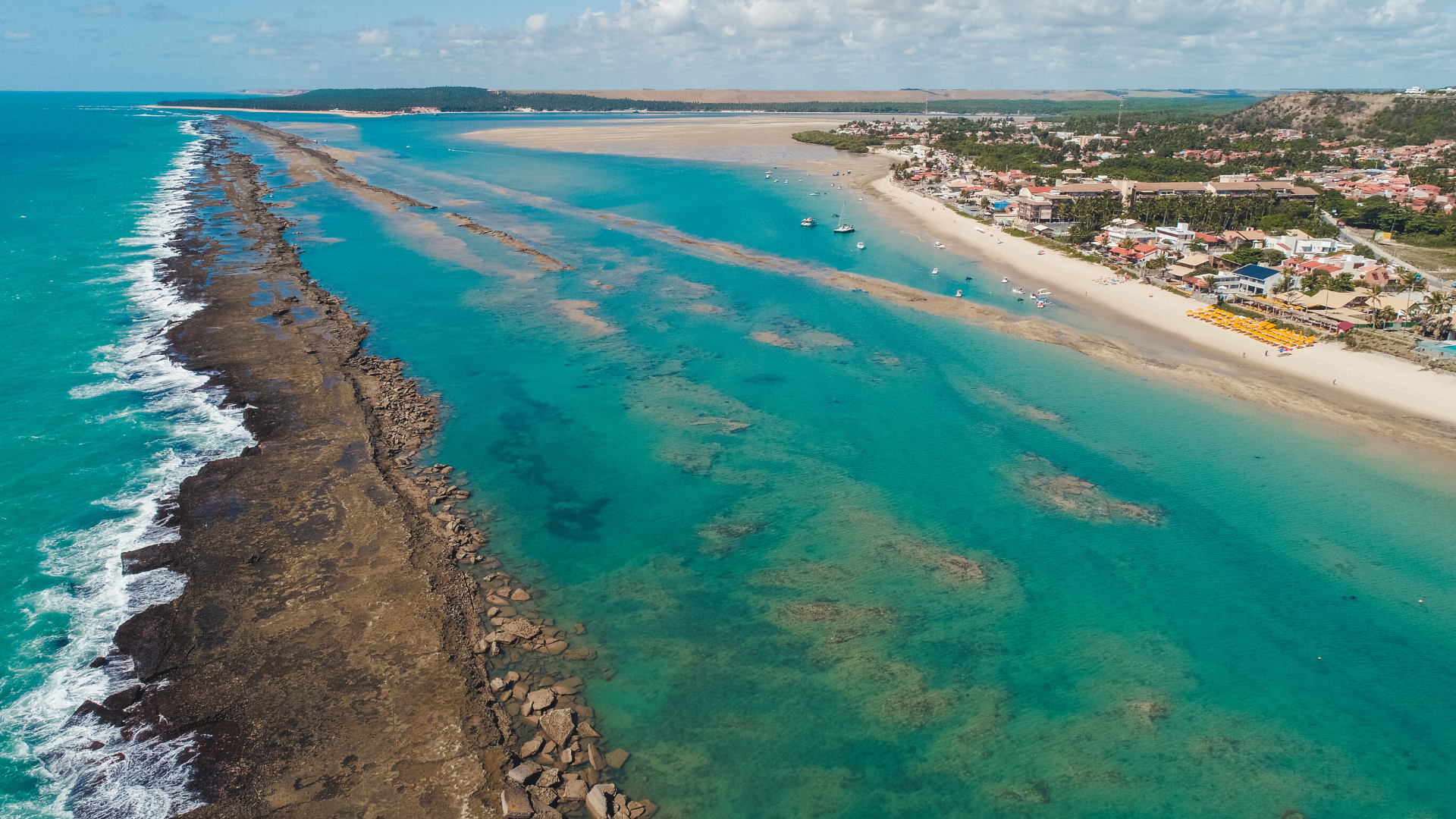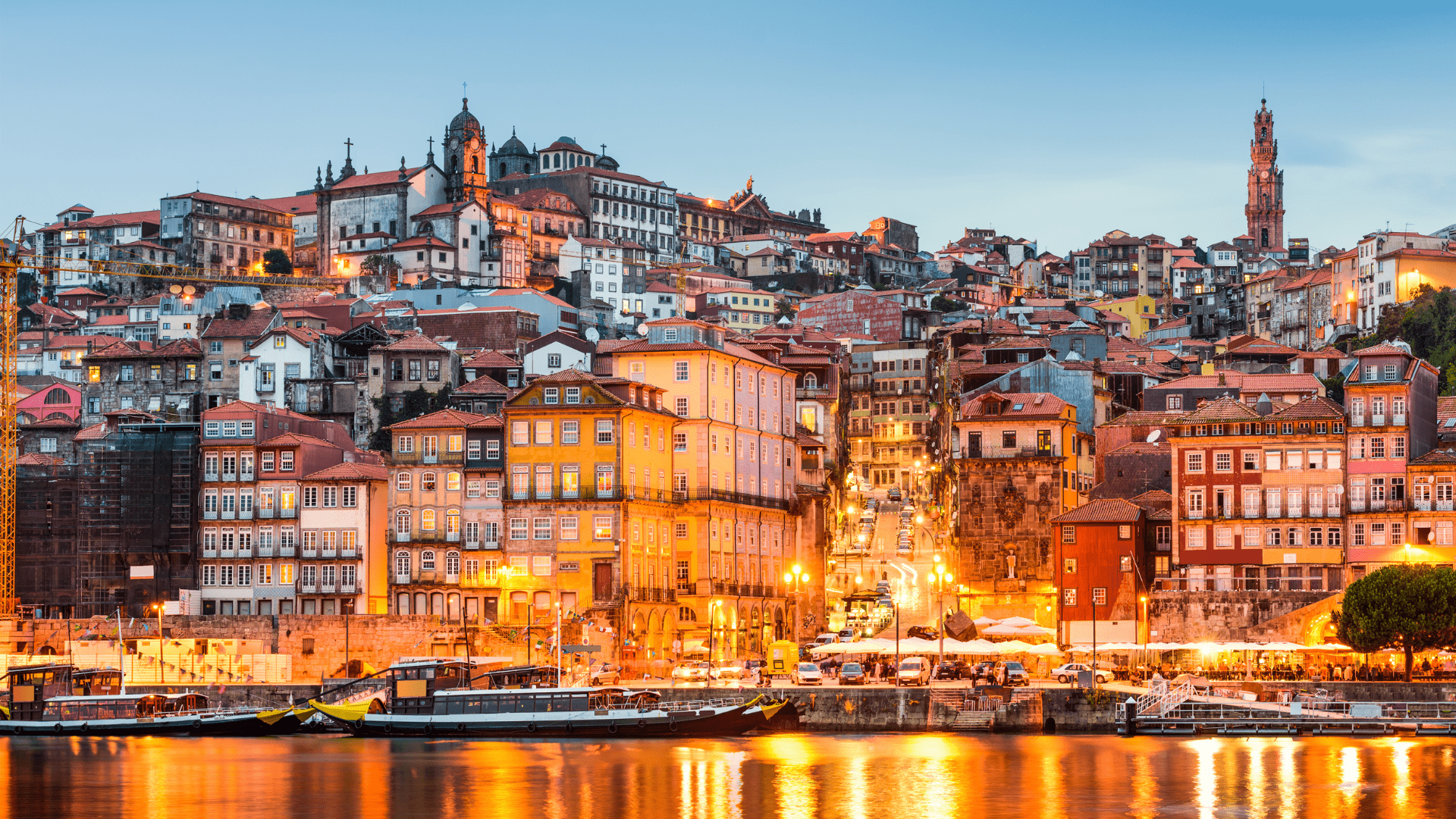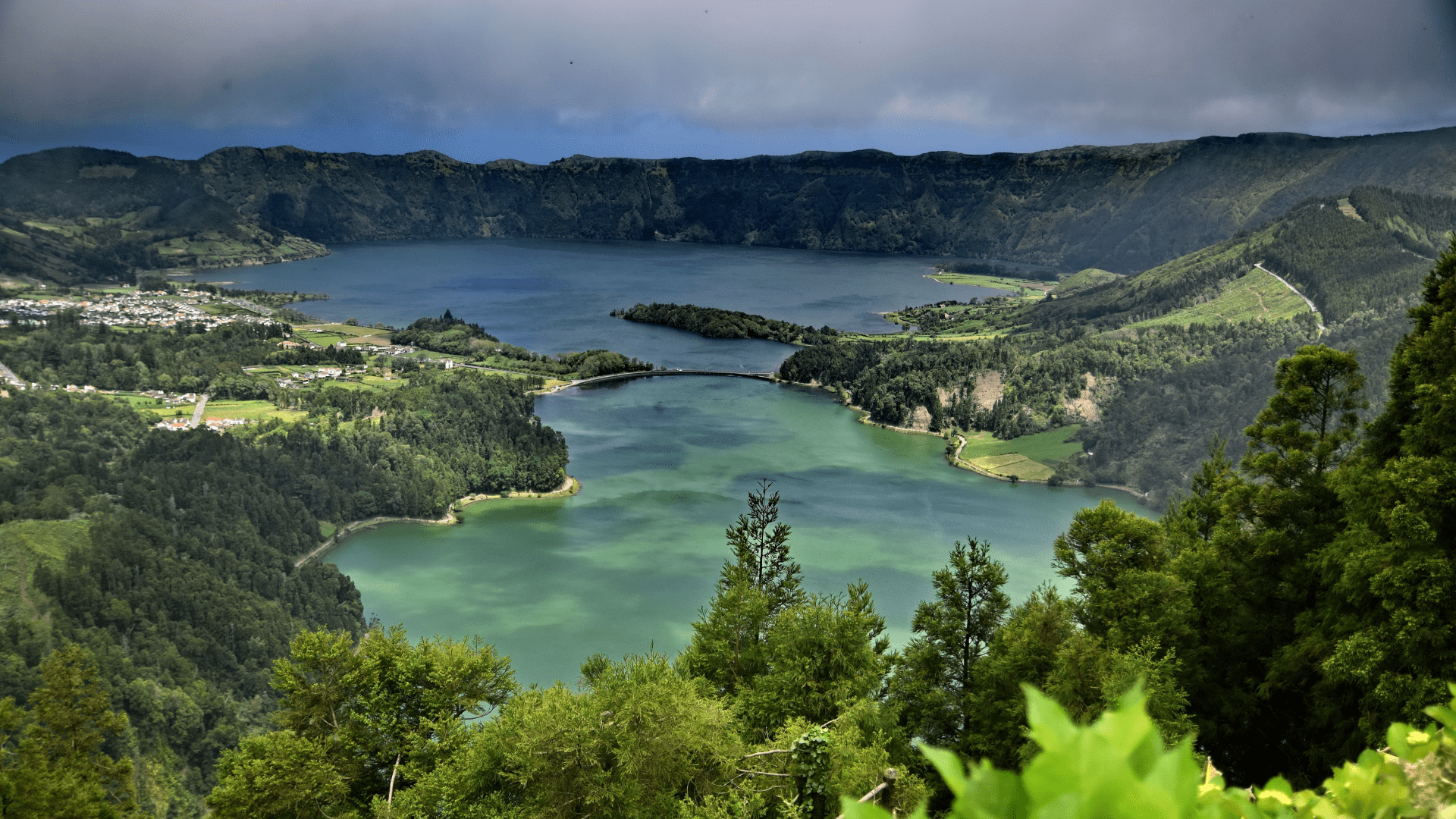10 Days/ 9 nights
LISBON– SINTRA – ÉVORA- ÓBIDOS – NAZARÉ – ALCOBAÇA – BATALHA – FÁTIMA – AVEIRO –COIMBRA – PORTO- GUIMARÃES – AMARANTE – DOURO VALLEY – TOMAR – ALMOUROL
DAY 1 (LISBON) Arrival to Lisbon. Transfer to the hotel.
LISBON CITY TOUR (1): THE SEVEN HILLS.
BAIXA (DOWNTOWN), Sites: Park Edward VII, Avenida da Liberdade, Squares of Rossio and Restauradores, St. Dominic’s Church (18th century), Ginjinha, Baixa Pombalina (Pombaline Downtown), Praça do Comércio.
CASTELO DE SÃO JORGE – One of Lisbon’s most distinctive monuments, being situated on the city’s highest hill.
The castle itself was founded in the 10th and 11th centuries, when Lisbon was an important Moorish port. It is generally agreed to afford the best view over the city and the River Tagus.
WALKING TOUR ALFAMA – Alfama is one of Lisbon’s most genuine neighborhoods – its architecture presents the unique characteristics of old and colorful buildings that give it a joyful character and tranquility. Alfama is one of Lisbon’s oldest neighborhoods and was founded by the Arabs who gave it the name “Al-hama” meaning ‘source of hot water, good water. While walking through the disordered and narrow streets of Alfama, you’ll feel like you’re in a small village, witnessing conversations between neighbors, listening to fado echoing through the stairways and being able to see the Tejo River from another perspective.
Overnight in Lisbon.
DAY 2 (LISBON)
After breakfast enjoy LISBON CITY TOUR (2): THE DISCOVERIES AND THE ROYALTY.
QUARTER BELEM: Belem Tower (16th century), Monastery of Jerónimos (16th century), Monument of Discoveries (20th century), Traditional Milk Custard Tarts of Belém “Pastéis de Belém” (19th century).
QUARTER BELÉM – Belém is known as the historic district of the Age of Discovery. It was from its waterfront that Vasco da Gama and other explorers departed for their voyages, events celebrated today by grand monuments and museums in the neighborhood.
MONASTERY OF JERÓNIMOS Built in the 16th century, an impressive example of Manueline architecture. It was King Manuel I who ordered the construction of the Monastery and its endowment to the Order of the Friars of Saint Jerome. The sheer magnificence of the building reflects the universal vision of its founder and the scale of the wealth available to the Crown. This was the starting point of the Portuguese discoveries.
PASTÉIS DE BELÉM. DO NOT MISS THIS TRADITIONAL SWEETS. Despite all these attractions, it’s a pastry shop that receives the most visitors. At Antiga Confeitaria de Belém (simply known as “Pastéis de Belém” or “Belém pastries”) you may devour one or several of Lisbon’s famous custard tarts that originated on this site, and that are still unlike any others found around the country, made here from a secret recipe.
TOUR in QUARTER BAIRRO ALTO (photo stop): Viewpoint São Pedro de Alcântara.
OPTIONAL TOUR: LISBON FADO SHOW (UNESCO) + FOLKLORE SHOW + DINNER WITH DRINKS
Overnight in Lisbon.
DAY 3 (SINTRA)
After breakfast enjoy excursion to SINTRA: LENGEDARY CASTLES | NATURE AND ARCHITETURE
SINTRA is a town of palaces, landscapes, culture, Art and also of great romantics who passed through here. Learn about the ancient myths of Celtic bards, the Moorish legends, the passions of the Christian Reconquest and a masonry that makes this site so unique in the world and yet so magical! There were several romantic figures that have passed in Sintra. From literature to music, the town of Sintra has inspired various figures and dazzled others with its mystical and charming environment. In the morning, we visit the Historical Centre of Sintra, with visit to the traditional narrow streets full of flowers and local craft shops, viewpoints, with compulsory stop at the traditional sweets and Ginjinha (cherry liqueur).
We start with cultural tour with NATIONAL PALACE OF SINTRA, unique example of medieval palaces in Portugal. From the earliest dynasties, Sintra was a favorite spot for the Portuguese kings. Its interior tell not one, but several stories of Portugal. The decor has great value, combining furniture, paintings and tiles. Outside we see the two large conical kitchen chimneys with 108 feet high, a symbol of Sintra.
Continue to PENA ROYAL PALACE, in the top10 of the most beautiful palaces in the world! A real enchanted palace. One of the most beautiful examples of the romantic revival of the 19th century. Built on the site of a former convent of friars from the Order of St. Jerome. A fantasy from King Fernando of Saxe Coburg-Gotha. A palace with a complexity of styles: neo-Gothic, neo-Manueline, neo-Islamic and neo-Renaissance.
AFTER LUNCH – CABO DA ROCA CLIFF, CASCAIS AND ESTORIL
You cannot afford to miss paying a visit to the westernmost point on the European mainland, the headland of CABO DA ROCA. Situated at a latitude of 38º47’ North and a longitude of 9º30’ West, CABO DA ROCA is an important coordinate for anybody sailing along the coast, since it is the westernmost point on the European mainland.
Situated close to the sea and traditionally a fishing village, CASCAIS enjoyed an important period of development in the 14th century, when it was a major stopping off point for boats on their way to Lisbon, turning it into a very busy port at that time. It was, however, in the second half of the 19th century, when sea bathing became a popular activity, that Cascais was given the impetus that transformed it into a very fashionable summer resort.
Overnight in Lisbon.
DAY 4 (ÉVORA)
After breakfast walking tour of the city of EVORA, CAPITAL OF ALTENTEJO (UNESCO site)
Topped by an imposing cathedral, Évora is on sloping hill out of the huge Alentejo plains. A walled city classified as a UNESCO World Heritage Site. The city, with its narrow streets of Moorish origin contrasting with squares full of light. Évora was conquered by the Romans in 59 BC, named as “Liberalitas Julia”. After the Portuguese reconquest in the 12th century, an urban area grew beyond the city walls. The city was very important for several Portuguese kings of the first and second dynasties. During this period, all of it was endowed with various palaces and monuments, particularly during the reigns of King John II and Manuel (15th and 16th centuries).
TRADITIONAL WINERY = Wine tour and wine tasting.
RAVASQUEIRA WINERY: A winery with old traditions, but modern in its wine production. Walk in the vineyards, explore the wine cellar, a museum of carriages, gardens, and take a wine tasting.
Some wines won golden awards in WINE SPECTATOR.
Overnight in Lisbon
DAY 5 (ÓBIDOS – NAZARÉ – ALCOBAÇA – BATALHA – FÁTIMA)
After breakfast enjoy city tour of OBIDOS. Obidos is a charming and picturesque medieval hilltop village, with white washed houses decorated with flowers. Captured from the Moors by the first king of Portugal, D. Afonso Henriques, in 1148, though already occupied before the Romans reached the Iberian Peninsula, the village became prosperous from the time it was chosen by the royal family, when the King Dinis offered it as wedding gift to his wife Isabel, in the 14th century. Full of flowers, many medieval monuments and beautiful panoramic views are found here, relax yet in a medieval bar while enjoying the famous local liqueur “Ginjinha”.
NAZARÉ is blessed with magnificent light, pleasing sun, fine white sand and hospitable locals. The seven colorful skirts worn by Nazaré women have been worn since the days when they used to wait for their husbands to return from the day’s fishing trip.
But today the town is defined more by the waves that attract surfers and body-boarders and the beautiful underwater landscapes that attract divers. The lovely cove is protected by high cliffs, atop which the Sítio da Nazaré offers a memorable view.
ALCOBAÇA. Visit the Monastery or Royal Abbey of Santa Maria, founded by the Order of Cistercians in 1153. Building began in 1178 on land donated by Dom Afonso Henriques, the first King of Portugal to the Order of Cistercians, in fulfilment of a vow made after the Christian reconquest of Santarém. Testify the magnificent gothic tombs of the two lovers King Pedro and Ines de Castro.
BATALHA. Visit the great Monastery of Batalha, Built in 1386 to keep a vow by Portuguese King Dom João I to the Virgin Mary that he would build it if Portugal defeated Castille at the Battle of Aljubarrota on 14th August 1385.
FATIMA. The apparitions of Fatima have developed immensely the local town into one of the largest centers of Marian cult in the world. The major manifestations of devotees are hold at May 13 and 13 October. Every year more than 4 millions of people around the World visit Fátima.
Overnight in Fátima.
DAY 6 (AVEIRO – COIMBRA)
After breakfast enjoy city tour of AVEIRO. Next to the sea and the Ria (estuary), is crossed by a network of channels through which “Moliceiros” (local boats) meander. These slim, colourful vessels used to be used to collect algae and seaweed, and today are for sightseeing trips. Visiting on foot does not mean too much effort either since the city is flat.
In the 16th century, the development of the salt industry, agriculture and fishing and the first cod-fishing expeditions to the distant Newfoundland in 1501 brought Aveiro a period of great prosperity, which led to its being awarded a charter by D. Manuel I in 1515. Aveiro has also a number of buildings in Art Nouveau style that are worth seeing.
COIMBRA: Capital of Beira Litoral, of Roman origin Aeminium, was also the former capital of the Portuguese Kingdom. One of the most beautiful cities of Portugal, preserved several historical monuments, medieval churches and the most important library in Portugal! Coimbra, situated on the bank River Mondego, in the geographical center of Portugal, has plenty of charm in its academic streets, narrow, with small courtyards, arches and floral eaves, cafes, galleries and bookstores.
Take a guided walking tour in its historic center, as this is the best way to explore the old town.
We start at the University of Coimbra (1290), to the Old Cathedral (1162), New Cathedral (1598), Academic Neighborhood, Almedina, Igreja de São Tiago, Igreja de Santa Cruz (1131). Free time for shopping and regional sweets.
Overnight in Porto.
DAY 7 (PORTO)
After breakfast enjoy city tour of PORTO “THE HOME OF PORT WINE”. Capital and gateway to the north of Portugal, Porto is both the city that provided a nation with a name and a fortified wine known world-wide: Port Wine.
With its splendid geographical location on the mouth of the river Douro and an architectural heritage of exceptional quality, the historic center of Porto was declared UNESCO World Heritage in 1996. Porto is the capital of the North and the second largest city in the country; its hard-working inhabitants are noted for their commercial enterprise, always standing firm against outside impositions and foreign invaders, which explains why Porto has become known as the «unvanquished» city. In this Porto Day tour we will visit the most important sites of this old city.
Take a guided tour the Port Wine Old Cellars with a special tasting of these wines.
Admire the typical granite houses and monuments, with all the rhythms of city life, its movement and intense retailing, the main square of Av. Aliados, the highest tower in the city of Clerigos, the church of Sao Francisco all furnished with gold leaf, the world famous bookstore Livraria Lello, the Ultramodern Casa da Música building, the Atlantic fortress of Castelo do Queijo, the old Cathedral, the Palácio da Bolsa (Chamber of Commerce), Ribeira (Riverside), and make a river cruise under the city’s six bridges, from where you can enjoy an entirely different view of the city.
Overnight in Porto.
DAY 8 (GUIMARÃES – AMARANTE- DOURO VALLEY)
After breakfast enjoy city tour of GUIMARÃES. A city known as the «cradle of the Portuguese nation», whose historical center is classified as World Heritage by UNESCO. Explore the historic city center, the Castle and the Ducal Palace.
AMARANTE. All visitors to Amarante will most certainly be impressed by two imposing natural features: the great Serra do Marão rising above the city in a series of majestic landscapes and the River Tâmega, the longest tributary of the river Douro, whose journey begins in Galicia and which flows through the heart of Amarante, giving added colour to the picturesque houses standing on its banks.
The bridge at Amarante perpetuates the memory of the local population´s heroic resistance against Napoleon’s troops, who invaded Portugal in the early nineteenth century. Amarante’s sweets and cakes are extremely famous and easy to find in many of the region’s cake-shops and cafés.
LUNCH.
We continue our way towards the great Douro Valley passing through some small hilltop villages with granite “espigueiros” (granaries used for drying and storing corn), breathtaking landscape and then going down towards the Douro River, where the vines grow in terraces on the banks of the river, lending great beauty to the landscape, with large estates and manor houses.
DOURO VALLEY. Classified a world heritage site, the man gave birth to port wine and table wines of great quality. Port wine is the oldest Ambassador of Portugal. Cultivated in terraces of the Douro, has the honor to belong to one of the oldest demarcated regions in the world, since in 1756 was created the General Company of Agriculture and Vineyards of the Alto Douro. Here was also born the Douro table wines, which in recent decades have acquired great notoriety and border projection thanks to their quality, both in the reds as the whites and rosés. Green in summer, fire color in autumn, the Vineyard has given rise to a unique landscape classified by Unesco.
Visit a family winery famous for producing famous Red table wines and Green Table Wines, a light chilled wine only produced in this area with Alvarinho grape variety.
Overnight in Douro Valley.
DAY 9 (TOMAR- ALMOUROL)
After breakfast enjoy city tour of Tomar. Former seat of the Order of the Knights Templar, TOMAR is a city of great charm for its artistic and cultural wealth, whose greatest expression is in the Convent of Christ, one of the chief works of the Portuguese Renaissance. We will visit the Templar Castle and the remarkable CONVENT OF CHRIST inside. it is the centerpiece of the city and classified as a World Heritage site by UNESCO.
ALMOUROL. In the middle of the River Tagus, the enigmatic Almourol Castle is one of the most emblematic monuments of the Christian reconquest. Situated on an island in the middle of the River Tagus, Almourol is one of the most distinctive castles in Portugal, because of its historical significance and surrounding landscape.
Overnight in Lisbon.
DAY 10
After breakfast transfer to airport. END OF OUR SERVICES





